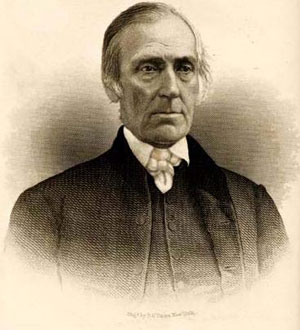
Levi Coffin, whom some later called “President of the Underground Railroad,” was born Oct. 28, 1798, in North Carolina.
Coffin grew up working on his father’s farm. He later related that he became an abolitionist at age 7 when he asked a slave who was in a chain gang why he was shackled. The man replied that it was to prevent him from escaping and returning to his wife and children. That disturbed Coffin. By age 15, he was helping his family assist escaping slaves. As the repressive Fugitive Slave Act became more strictly enforced, the family began conducting their assistance to slaves with greater secrecy, mostly at night. By the 1820s, Quakers in North Carolina were being openly persecuted for helping runaway slaves. Many left for Ohio, Indiana and other states.
After moving to Newport (now Fountain City), Indiana, in 1826, Coffin made contact with the community of free black people there, who were already involved in the network that became known as the Underground Railroad. Since slaves hiding in the homes of fellow African Americans were often recaptured, Coffin offered to hide slaves in his own home to make them more secure. He first took runaway slaves into his home in 1826-27.
Word of his activity quickly spread, leading others to join. They formed a more formal route for the fugitive slaves to move from stop to stop until they reached Canada. Coffin referred to the system as the “mysterious road.”
Over time the number of escaping slaves increased. Coffin estimated that on average he helped 100 escape annually – as many as 3,000 in all. His home became the convergence point of three major escape routes. Coffin would move the fugitives from his home to the next stops during the night. So many fugitives passed through his home that it became known as the “Grand Central Station of the Underground Railroad.”
From his beginnings as a farmer, Coffin became owner of a general store, then a major investor and director in the Bank of Indiana, and operator of a mill. When he built a new two-story brick home in 1838, he included special hiding places for the runaway slaves. A secret door was created in his maids’ quarters where up to 14 people could hide in a narrow crawl space between the walls.
He continued his Underground Railroad and other anti-slavery activities in Cincinnati, Ohio, where he moved in 1847.
Coffin helped found the Western Freedmen’s Aid Society in 1863 and donated $100,000 to it after the Civil War ended. He strongly advocated for aid to the freed slaves to enable them to take their full place in American society.
He died on September 16, 1877, in his Avondale, Ohio, home. His funeral, in the Friends Meeting House of Cincinnati, drew an enormous overflow crowd. Four of his eight pallbearers were free blacks who had worked with Coffin on the Underground Railroad. In 1902, African Americans in Cincinnati erected a monument over Coffin’s grave
Once asked why he helped slaves, Coffin said, “The Bible, in bidding us to feed the hungry and clothe the naked, said nothing about color, and I should try to follow out the teachings of that good book.”
Photo: Levi Coffin, drawing based on a circa 1850 engraving. Wikimedia Commons

MOST POPULAR TODAY

Zionist organizations leading campaign to stop ceasefire resolutions in D.C. area


High Court essentially bans demonstrations, freedom of assembly in Deep South

Afghanistan’s socialist years: The promising future killed off by U.S. imperialism

Communist Karol Cariola elected president of Chile’s legislature






Comments